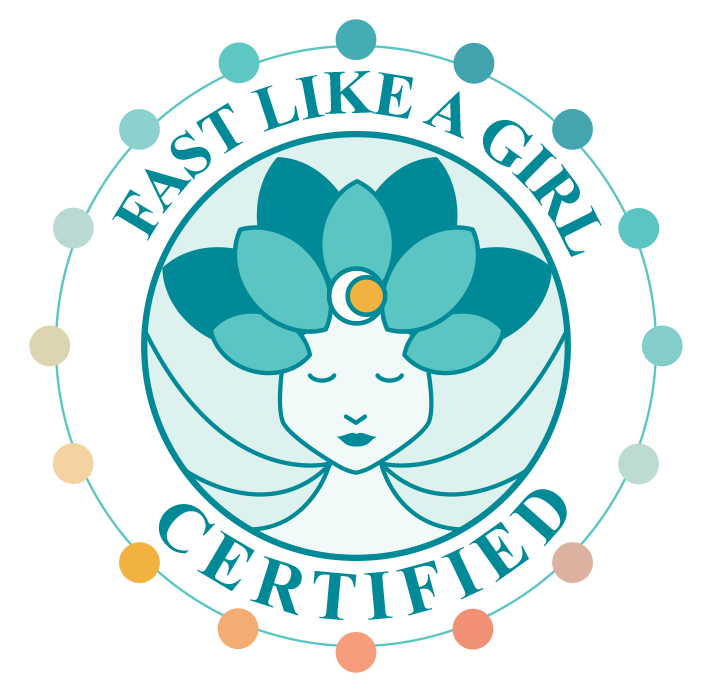Long before HRT (hormone replacement therapy) for women gained popularity, became nearly ubiquitous, experienced backlash due to interpretations of the Women’s Health Initiative, and later re- surged in acceptance, our ancestors thrived during their menopausal years without supplemental hormones.
Women who lived beyond their childbearing years played pivotal roles in society contributing to the survival of their grandchildren, staying actively involved in their families, and fostering empathy within their communities. By examining their lifestyles –we can uncover valuable lessons for achieving hormonal balance and vitality in modern times.
As a Naturopathic physician, I advocate for a holistic approach that encompasses diverse movement and exercise, nurturing healthy relationships at home, work and within the community, as well as cultivating a positive outlook on life to manage stress and foster fulfillment. These lifestyle recommendations are essential for overall well-being. and I cover some in other blogs on this website.
Female Hormones & Menopause
When we consider a woman’s hormonal balance after menopause, we need to look at every system that impacts hormones and that hormones impact. The production of estrogen and progesterone influence other neurochemicals that round out the symptom picture of low or imbalanced hormones. For example, the irritability that menopausal women can feel can be traced back to the lack of GABA that goes along with low progesterone.
Dr. Mindy Pelz sees hormones in a hierarchy because clinically, she sees that patients cannot relieve their menopausal symptoms effectively and sustainably without nurturing and balancing the other hormones. Of course, hormonal actions are interconnected in complex ways, but some seem to have a huge modulating influence on those lower in the hierarchy. Estrogen, progesterone, and testosterone are at the bottom, so the hormones above them being sufficient, not excessive, and balanced facilitates their production and balance.
Oxytocin, the love and bonding hormone, is at the top of the hierarchy and cortisol is right below it. These are naturally supported with a lifestyle replete with loving relationships, being outside in Nature, and a bright outlook on life. Menopause is often the time of a woman’s life where cortisol from stress and poor adrenal function catches up with her and causes havoc with irritability, hot flashes and other menopausal symptoms. With insulin the final hormone above the female hormones, insulin sensitivity plays a huge role in hormone production.
The other important player in female hormone balance at menopause is the liver due to its role in breaking down and detoxifying hormones and handling toxins in general.
What to Eat for Hormonal Balance
Food goes beyond providing energy for our bodies since it has the power to modulate hormones thanks to the vitamins, minerals, fatty acids, amino acids, and phytochemicals it contains. The combination of macronutrients protein, carbohydrate, and fat also modulate insulin responses.
The following explanation of how food can balance a woman’s hormonal system is very much simplified yet practicing this approach supported by the resources included in the footnotes can show women more of how it works.
Foods for Estrogen Support
The key to producing estrogen is lower carbohydrate eating to create a lower insulin response and promote insulin sensitivity. However, not so low as to not include certain veggies and fruits such as sprouts, cruciferous vegetables, zucchini, onions and garlic, and berries. Healthy fats such as in olive oil and avocados support estrogen production. So do seeds such as pumpkin and flax as well as walnuts, almonds, cashews, and pine and Brazil nuts for their oils and phytoestrogens. The fiber and phytochemicals in legumes such as soy, peas, lentils, chickpeas and lima, kidney, mung and pinto beans also help estrogen production.
Signs that menopausal women may be needing their bodies to make more estrogen include hot flashes, night sweats, vaginal dryness, inability to handle stress, dry skin, memory loss and other cognitive changes, bone density loss, chronic musculoskeletal injuries, increased urgency and frequency of urination, and weight gain.5 Switching to eating lower carb and including estrogen supporting foods can help alleviate these symptoms.
Foods for Progesterone Support
Keeping cortisol low er in its healthy range while increasing glucose slightly helps progesterone production.
It’s no mistake that women crave carbohydrates the week before their periods when progesterone is increasing. What assists the production of progesterone are higher carbohydrate vegetables as well as tropical and citrus fruits, legumes such as black or kidney beans and sunflower and sesame seeds. Cruciferous vegetables also support progesterone along with root vegetables such as all colors of potatoes, yams, beets, turnips, and fennel plus winter squashes.
These are the foods menopausal women can lean into when having low progesterone symptoms of insomnia, chronic pain, difficulty relaxing, anxiety, feelings of impending doom, increased hunger, headaches and migraines, breast tenderness, and increased belly fat.
Whatever supports the liver also supports menopausal hormonal balance. Once a hormone is made, it is metabolized into different forms to be used in the body, then broken down to be eliminated. All this involves healthy liver function.
Foods to Avoid and for Liver Support
The first thing to pay attention to is avoiding what hinders the liver’s ability to metabolize hormones and detoxify the body.
Substances that hinder liver function include alcohol more than two glasses per week and a diet full of sugar, refined flours, inflammatory fats, and beverages high in fructose, including HFCS.
In addition, recreational drugs, primarily opioids and cocaine, medications such as acetaminophen, NSAIDs, methotrexate, amiodarone, some antiviral drugs, and environmental toxins hinder the liver from processing hormones.
Traditional support for the liver comes in the form of bitter foods such as dandelion, radicchio and other leafy greens, artichokes, and cruciferous vegetables.
In addition, sulfur compounds in garlic, pectin in apples, and catechins in green tea can support the liver.
Also, high antioxidant foods such as citrus fruits, beets and carrots, and berries support the power of the liver to detoxify.
Finally, olive oil and omega-3 oils as in certain fish and raw walnuts support liver detoxification.
How to Eat
Beyond the power of food choices, eating with an eye on modulating blood sugar can optimize insulin sensitivity. Because insulin is above female hormones in the hierarchy, it has a powerful influence on their production.
Research has revealed that the order we eat foods matters A LOT.
In one study, people diagnosed with prediabetes ate exactly the same meal but either had the carbohydrates first or last. When they ate their carbohydrates at the end of the meal, their peak blood glucose was 38% lower than eating them at the beginning of the meal. In addition, eating carbohydrates first not only created a blood sugar spike, but several hours later resulted in too low blood sugar that it created symptoms. In a similar study with Type 2 diabetics, their peak blood glucose was 54% lower. In addition, the insulin released over time was 48% lower.
Besides this brilliant strategy of food order, eating to avoid glucose spikes involves including all macronutrients in a meal or snack.
The Glucose Goddess, Jessie Inchauspe recommends several ways to do this.
- Eat foods in this order: fiber (salad and veggies), protein and fat, then starches and sugars.
- Add a plate of vegetables to all your meals; yes, even breakfast!
- Eat a low-carb breakfast, including veggies.
- Only eat whole fruit fresh or frozen (not dried or juiced) with fat and/or protein.
- “Clothe your carbs” (starches & sugars) with protein, fat, or fiber.
- If you want a snack, make it savory not sweet, such as nuts or avocado.
- If you are craving a sweet snack, have dessert at the end of a full meal instead.11
- In addition, including vinegar before or during a meal reduces glucose spikes. This practice helps reverse insulin resistance because it flattens blood glucose surges without increasing insulin release.
The Glucose Goddess also recommends to move your body for 10 minutes after at least one meal in the tradition of the Indian custom of “100 steps after a meal.”
Glucose released from the meal gets escorted into muscles without insulin when they are contracting while moving within 90 minutes of eating. It works with only 10 minutes of light movement, like walking, tidying up around the home, lifting heavy objects, climbing and descending stairs, or her favorite, the seated calf-raise.
When to Eat: Fasting and Rhythms for Hormonal Balance
When women eat rhythmically, they can build both estrogen and progesterone and all the neurotransmitters that go along with them. The rhythm for women past menopause may follow the moon cycle to mimic their pre-menopause past monthly menstrual cycles.
The new moon correlates with the beginning of the menstrual cycle, the main time of building estrogen. From full moon to new moon is the half of the cycle predominate in building from ovulation leading to a peak in progesterone ending with the menstrual flow. This is the big picture, although it is actually more nuanced.
Another option is to alternate days during a week of eating to build estrogen with those to build progesterone.
They could do 3 days of each per week, leaving one day for an extended fast. With a weekly rhythm, women have the flexibility to respond to events in their schedule which would favor one or the other.
Social dining could favor progesterone building by leaning into higher carbohydrates and seeing friends tends to lower cortisol. For a work project with the need for mental clarity and focus, women could lean into lower carbohydrates and metabolic ketosis for estrogen building.
A daily rhythm of intermittent fasting with a predetermined eating window is powerful for the body to switch into fat-burning. This helps women regain insulin sensitivity when they have lost it.
By gradually compressing the eating window and varying the hours of fasting overnight into the day from 13 to 17 hours or more, intermittent fasting facilitates the production of estrogen through regaining insulin sensitivity.
Since women are rhythmical, they need days of shorter or no fasting in order to produce progesterone.
This is why low-carb and keto diets are not sustainable for women. Yes, women can reap the metabolic benefits, but then they hit a wall with irritability and lost motivation when hormones and neurotransmitters needing higher glucose from carbohydrates cannot be produced.
Restoring their rhythm by alternating between the fat-burnings system, ketosis, and the sugar-burning system, glycolysis is the sweet spot for female hormone balance.
How Long Not to Eat: Benefits of Longer Fasts
Just to get a sense of what is possible, longer fasts can clear out senescent cells which can no longer replace themselves but instead release inflammatory chemicals, reset many body systems, including the immune system for prevention of cancer, plus release stem cells for rejuvenation.
Research has shown that a 24 hour fast resets the microbiome, also very important in hormonal health. By fasting for 36 hours, taken to the limits in the every-other-day diet, fat-burning can be relaunched and maintained. A 48 hour fast has been shown to reset the dopamine system, enhancing the ability to experience joy and motivation. And a 72 hour fast maximizes all these benefits and more.
Did I mention that hunger hormones turn off at 24 hours of fasting? Therefore, these longer fasts are relatively easy to do with proper guidance, making sure to maintain electrolytes and track blood sugar, ketones, and symptoms.
Yes, a woman’s body can be sufficient in hormones after menopause, all on her own!
Taking a note from our ancestors, one key is eating food as found in Nature and not the toxic highly and ultra processed foods so prevalent in our culture. By including foods which support the production of female hormones, women can tune into their bodies, and knowing which symptoms correlate with which hormones, shift eating patterns to support them.
Note that our ancient ancestors did not have plentiful food all day every day, year-round like we do, so were forced to fast intermittently and somewhat seasonally. But when the berries were ripe or the harvest brought in or after a successful hunt, there was a feast.
Women’s bodies are wired for thriving in this kind of varied environment, so today we can take advantage of this and vary what we eat, how we eat, and when we eat for hormonal balance.
Real Life Success Stories
No More Hot Flashes
A 49 year old perimenopausal woman had only 2 menses in the last year and was suffering hot flashes up to 5 times a day and night sweats that woke her at least once a night, soaking her bedclothes. After 9 months of faithfully eating according to when her menstrual cycle would be for hormone building and intermittent fasting for insulin sensitivity, her hot flashes and night sweats were gone.
A Lift in Mood in 48 Hours
A 66-year-old woman with a history of childhood trauma found no joy in life. She was currently estranged from her daughter plus had broken up from a long-term relationship. She also had hot flashes and insomnia, waking several times a night, taking an hour or more to get back to sleep.
She had done some intermittent fasting before and was excited to learn to eat and fast to support her hormones.
After a few weeks, she was ready for her first 48 hour fast and after that her demeanor was lighter and sleep was becoming more sound.
After a second one a month later, she was actually smiling and her topics of conversation were about what she was enjoying in her life instead of the troubles she was having.
She now has 48-hour fasts in her toolbox to do when she needs a boost in her mood because fasting has the power to reset her nervous system.
Muscle and Stamina Building
A 68 year old woman felt that she kept getting weaker and was especially dismayed that her grip strength to open jars was so poor.
When she carefully cycled foods and intermittent fasted and timed a weekly strength training with protein loading afterwards, she visibly built muscle.
She also did periodic 72 hour fasts which resulted in clearing of hip pain, more supple joints, and continued muscle definition. She easily climbed for 4 hours up and down a mountain and felt it was easier to do heavier yardwork without exhaustion afterwards.
References
- The Why of Menopause In: Mosconi, Lisa PhD. The Menopause Brain, New York, USA: Avery an imprint of Penguin Random House LLC; 2024:102–107.
- Foods that Support Your Hormones In: Pelz, Mindy Dr. Fast Like A Girl, Carlsbad, CA, USA: Hay House, Inc; 2022:111.
- Fasting a Woman’s Way In: Pelz, Mindy Dr. Fast Like A Girl, Carlsbad, CA, USA: Hay House, Inc; 2022:62-66.
- Foods that support Estrogen, Pelz, Mindy Dr. In: Eat Like A Girl, Carlsbad, CA, USA: Hay House, Inc; 2024:59
- Matching Your Symptoms to Your Food Style, Pelz, Mindy Dr. In: Eat Like A Girl, Carlsbad, CA, USA: Hay House, Inc; 2024:88.
- Foods that support Progesterone, Pelz, Mindy Dr. In: Eat Like A Girl, Carlsbad, CA, USA: Hay House, Inc; 2024:76.
- The Eat Like A Girl Philosophy, Pelz, Mindy Dr. In: Eat Like A Girl, Carlsbad, CA, USA: Hay House, Inc; 2024:27.
- Foods that support Great Liver Health, Pelz, Mindy Dr. In: Eat Like A Girl, Carlsbad, CA, USA: Hay House, Inc; 2024:28.
- Shukla A, Dickinson M, Coughlin N, et al. The impact of food order on postprandial glycaemic excursions in prediabetes. Diabetes Obes Metab. 2019;21:377-381.
- Shukla A, Aronne L, Iliescu R, Thomas C. Food Order Has a Significant Impact on Postprandial Glucose and Insulin Levels. Diabetes Care. 2015;38:e98-e99
- The Four Hacks in this Method In: Inchsuppe, Jessie. The Glucose Goddess Method, New York, USA: Simon Element an imprint of Simon & Schuster, Inc;2023:20.
- What to Do if You Have No Cycle In: Pelz, Mindy Dr. In: Eat Like A Girl, Carlsbad, CA, USA: Hay House, Inc; 2024:83-87.
- Fasting a Woman’s Way In: Pelz, Mindy Dr. Fast Like A Girl, Carlsbad, CA, USA: Hay House, Inc; 2022:67.
- The Healing Power of Fasting In: Pelz, Mindy Dr. Fast Like A Girl, Carlsbad, CA, USA: Hay House, Inc; 2022:15-40.





